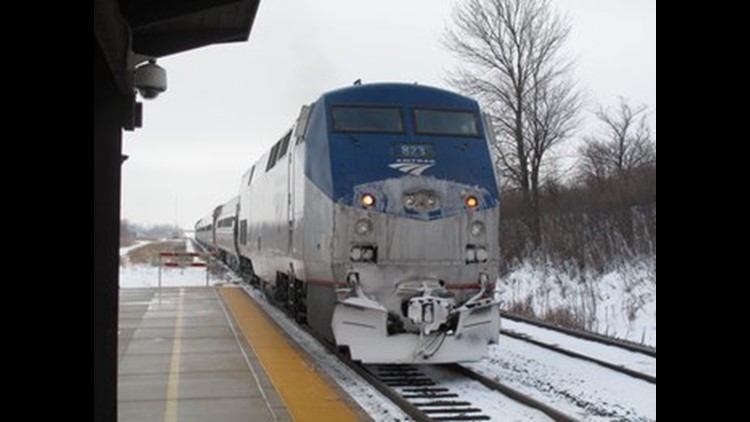WASHINGTON (CNN) — As the hours count down to $85 billion in government-wide spending cuts, there’s one transportation service that won’t be derailed — Amtrak.
Officials of the nation’s only long-haul passenger railroad say there will be no cutbacks or changes in its schedule, especially on its popular Northeast Corridor route between Washington, New York and Boston.
That’s much different than the scenario facing U.S. airlines, which may be forced to alter schedules if federally run air traffic control services are disrupted by spending cuts due to take effect on Friday.
Just how is Amtrak able to absorb a hit from the so-called budget sequester? Part of the answer lies in its charter as a for-profit government corporation, which allows it to operate like a business and charge fares and fees.
“Amtrak is planning to take actions to allow it to withstand a funding cut and not cut service. During (fiscal year) 2013, Amtrak is experiencing solid revenue growth and we have been controlling our costs and managing our budget in anticipation of a possible reduction in federal funding,” said Kimberly Woods, an Amtrak spokeswoman.
However, she acknowledged that the “continued lack of predictable federal appropriations makes proper budgeting and future planning extremely difficult.”
Rail service has been a priority for the Obama administration. While in the Senate, Vice President Joe Biden commuted for years to his home in Delaware on Amtrak, and is one of its biggest supporters.
The railroad has instituted a number of business reforms over the years, some of them under pressure from Congress, lowered debt, and has been able to make infrastructure improvements to boost operating efficiency.
Amtrak carried more than 31 million passengers last year and covers most of its operating costs from passenger revenue.
But it also receives taxpayer help each year.
In fiscal year 2012, Amtrak was approved to receive an operating subsidy of $466 million. The remainder of government help for capital improvements and debt service was estimated at $950 million.
If Amtrak is going to continue to stay on track, it will have to rely on its money-making short haul routes, where it competes with airlines.
Nearly 90 percent of the rail service’s ridership since 1997 has been on trips under 400 miles. Along with a 55 percent jump in passengers, it generated a positive operating surplus of $47 million in 2011, according to a new report released by the Brookings Institution.
Amtrak has been the fastest-growing domestic transportation mode over the past 15 years, the report said.
Ten metropolitan areas, mostly on the coasts, account for nearly two-thirds of its ridership. Its signature line, the high-speed Acela, operates in the Northeast and is aimed at premium-paying business travelers.
“The Brookings report shows that Amtrak ridership has been growing faster than any other domestic mode of transportation, faster than GDP, and faster than population growth. These ridership numbers include our long-distance train passengers,” Steve Kulm, Amtrak spokesman, said in an e-mailed statement.
Heavily subsidized long-haul routes have long been a target of criticism from Amtrak opponents, especially in Congress.
The report on rail travel trends found ridership on long distance routes carry less than 20 percent of system riders and contributed a drag to Amtrak’s bottom line to the tune of $614 million.
“We appreciate their suggestion to allow states the flexibility to use their federal surface transportation dollars for rail investments. With regard to how long-distance trains are funded, Congress has determined that these services are vital and a necessary part of America’s national transportation system and economy,” Kulm said.
Robert Puentes, a Brookings senior fellow and co-author of the report, said that Amtrak is “too often considered a big, bloated bureaucracy that depends heavily on federal subsidies and is no longer relevant to the technologically-oriented metropolitan economies of today.”



